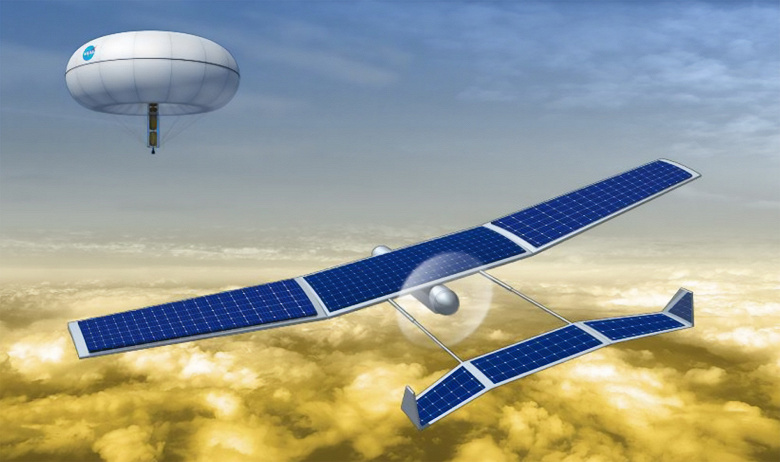The mission to Venus will be able to shed light on the possibility of the existence of life in the atmosphere of the planet
Venus, with an average temperature of 450 °C, atmospheric pressure 92 times higher than Earth's and precipitation of sulfuric acid, is the most unsuitable environment in the solar system for searching for signs of life. It is not surprising that space agencies, since the beginning of the era of space flight, have had great difficulty in studying the atmosphere of Venus.
However, there are many proposals for missions that could stay in the hellish environment of Venus long enough to accomplish a sample return mission. One such proposal was presented by aeronautical engineer Geoffrey Landis and his colleagues at NASA Glenn Research Center. Their proposed concept was selected for NASA's NIAC «Innovative Advanced Concepts» program. 2024. The concept includes an aircraft that could create its own fuel directly from Venus' atmosphere and send back samples.
Landis and his colleagues developed the idea of an airplane for Venus for about twenty years. In his first paper, published in 2001, Landis outlined how such a vehicle could safely explore the region above the cloud cover of Venus — approximately 60 kilometers above the surface. At this altitude, solar intensity is “comparable to or greater than that on Earth,” and atmospheric pressure makes flight easier than on Mars. Landis also pointed out that Venus's slow rotation would ensure that the plane would be in constant sunlight and would not require spare power to fly at night. In a subsequent paper, published in 2003, Landis and his colleagues presented the technical characteristics of a potential fleet of solar-powered aircraft. Two years later, in 2005, a publication was made in which the authors advocated a mission to study the atmosphere of Venus at a distance of 50-75 kilometers from the surface.
This area is part of the «middle atmosphere» Venus, where the temperature varies from -100 °C to 30-70 °C, and contact with sulfuric acid will be minimal. Moreover, due to the slow rotation (243 days), an aircraft flying above the cloud cover will also be in constant daylight. As Landis said: “The middle atmosphere of Venus is the most unexplored region of the planet, and simply flying in this area can lead to interesting scientific results. Airplanes have the advantage of having complete control over the flight and fly where you point them, not where the wind takes them. To take a sample, the aircraft will make it possible to carry out a controlled meeting with the returning missile».
Landis presented the mission architecture, including surface robots and an aircraft. While the robots will explore the surface for 50 days, the aircraft will study the atmosphere of Venus at an altitude just above the cloud cover. From this point on, Landis and his colleagues began to consider the latest advances in materials science that would make it possible to carry out the mission.
In 2008, Landis and his team presented their innovative concept for a Venus exploration aircraft at a meeting of NASA's Science and Technology Committee. This project was ambitious and had unique characteristics, which attracted the attention and interest of the space community.
The proposed aircraft has impressive dimensions: the wingspan is 9 meters, and the length – 7 meters. But the most interesting thing is its foldable design, which allows the device to be packaged in an airgel shell for delivery to another planet. This solution distinguishes it from other proposals such as balloons and probes, and will provide significant advantages in studying the atmosphere of Venus.
From the very beginning of the project, Landis and his team continued to refine the aircraft concept through various studies. The latest version, selected for development of the first phase of NASA's NIAC program, will use a mixture based on carbon monoxide as the fuel base.
The main innovation in this project is the ability to produce fuel directly on site – on the atmosphere of Venus. The researchers proposed using technology that would allow aircraft to extract fuel from Venus's atmospheric resources. This opens up new horizons for future missions not only to Venus, but also to other planets with atmospheres where this technique can also be used.
As Landis notes: «We were looking at the possibility of producing fuel on the planet for other space missions and began to wonder where else we could use this technology that would make our mission truly meaningful. This is how the idea of a mission to collect samples from Venus arose. This means that the aircraft will not only be able to study the atmosphere and surface of Venus, but also produce the necessary fuel in situ to support a mission on the planet.
In addition, Landis' team is working on components that will allow the aircraft to interact with the extreme conditions of Venus' atmosphere and the planet's surface. Thus, the mission will not only allow collecting samples of Venus, but will also bring scientific value for astrobiology. Landis says, “The recent discovery of phosphide in the clouds of Venus makes the idea of collecting cloud samples even more exciting.” This opens up new perspectives for understanding the possibility of life in the atmosphere of Venus.
Now that funding has been secured for the first phase of the project, Landis and his team are focusing on detailing plans and developing an operating concept that will align all mission components and validate its feasibility.

